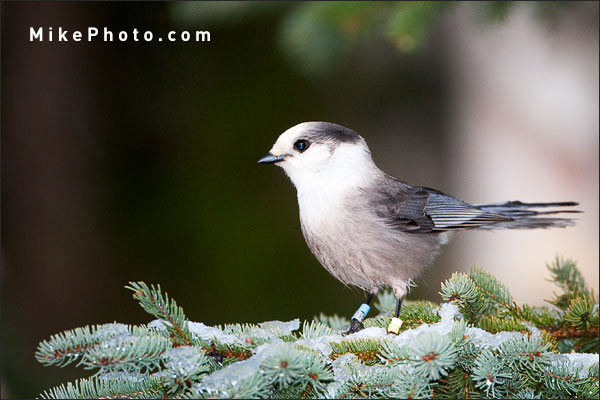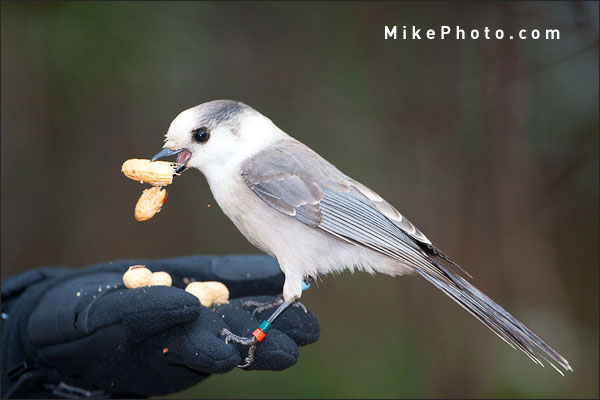At Algonquin Park!
As the third largest provincial park in Ontario, Algonquin is situated in a transition zone between the evergreen boreal forests of the north and the deciduous (shedding foliage at the end of the growing season) forests of the south. Due to its location, Algonquin Provincial Park is characterized by a high diversity of plants and animals.
Interesting Facts About the Park
- Algonquin Park is situated on a dome of Precambrian Canadian Shield bedrock (formed between 4.5 billion and 540 million years ago)
- Due to its elevation of 587 meters above sea level, the Park has a colder climate compared to surrounding areas
- Algonquin Park is one of the few accessible places where you can still experience Ontario's old-growth forests, with a few examples of 300+ years old white pine and hemlock
Over the years, 270 species of birds have been recorded in Algonquin Park, from which 138 species are known to breed within the boundaries of the park. One of its permanent residents, a true northerner, is the Gray Jay – formerly known as Canada Jay.

A Gray Jay monitors the handouts from a nearby tree.
The Gray Jay (Perisoreus canadensis)
Used to recognize people as a good source of food, the Gray Jay will not hesitate to land on your hand, spend a good few seconds carefully selecting the best seeds, nuts or berries, and then fly away to the nearby trees with its precious food to either eat or store it for later consumption.

While on my wife's hand, a Gray Jay breaks apart a peanut.
The mischievous Gray Jay gained the reputation of a camp robber by entering tents and stealing food right off your plate. During our many feeding sessions, we can report that Gray Jays are "greedy", as they always try to fit as many walnut halves and peanuts in their beaks as possible. During some of the more dramatical moments of stuffing their beaks at maximum capacity, I was actually afraid they will die of suffocation, or at least have a hard time emptying their beaks of so much food. But, nothing to worry about. What we call "greed" is in fact the bird's way of maximizing feeding efficiency – fewer trips to the food source means larger calorie intakes with less effort. And, of course, less time exposed to predators.
Interesting Facts About Gray Jays
- The oldest known Gray Jay – a female – lived for 16 years
- Gray Jays are permanent residents of Algonquin Park and manage to survive the cold and long winters by storing large quantities of food in thousands of locations throughout their territories during the fall season. Amazingly enough, when food is scarce during the winter months, Gray Jays will identify and recover most of the food caches just by remembering their secret locations
- When storing the food, Gray Jays use their sticky saliva to glue the food items in bark crevices, under clumps of lichen, or on tree branches and pine needles

In pouring raining, a Gray Jay in Algonquin Park is looking for a handout on Mike's hand. Photograph by Teo Lascut.
The pair of Gray Jays featured in this story was photographed in the Spruce Bruce bog parking lot. To entice them, bring unsalted peanuts, raw walnuts, sunflower seeds or cranberry fruits. Avoid anything salty. They will also take bread if you are coming unprepared.
Park your car and take a few minutes to scan the nearby trees for Gray Jays. Extend your hand and remain still. In general try to avoid sudden movements. Even if the Gray Jays are not in the area, you will most likely be greeted by friendly Black-Capped Chickadees and even Red-Breasted Nuthatches. And probably some noisy Blue Jays. If the Spruce Bog trail does not produce any sightings of Gray Jays, try also the Opeongo Road, Wolf Howl Pond, or the Mew Lake Campground.
Gray Jay Research in Algonquin Park – Band Identification
Colour-coded bands have been used in Algonquin Park to research Gray Jays. Both jays were displaying 4 bands each. After further inspection of all images at full resolution, here's what we have identified:
| Gray Jay 1 |
Gray Jay 2 |
| Left Leg |
Right Leg |
Left Leg |
Right Leg |
|
|
|
|
- Blue
- Silver, with the following numbers:
|
What else can I photograph in Algonquin Park?
Links of Interest
How To Get To Algonquin Park